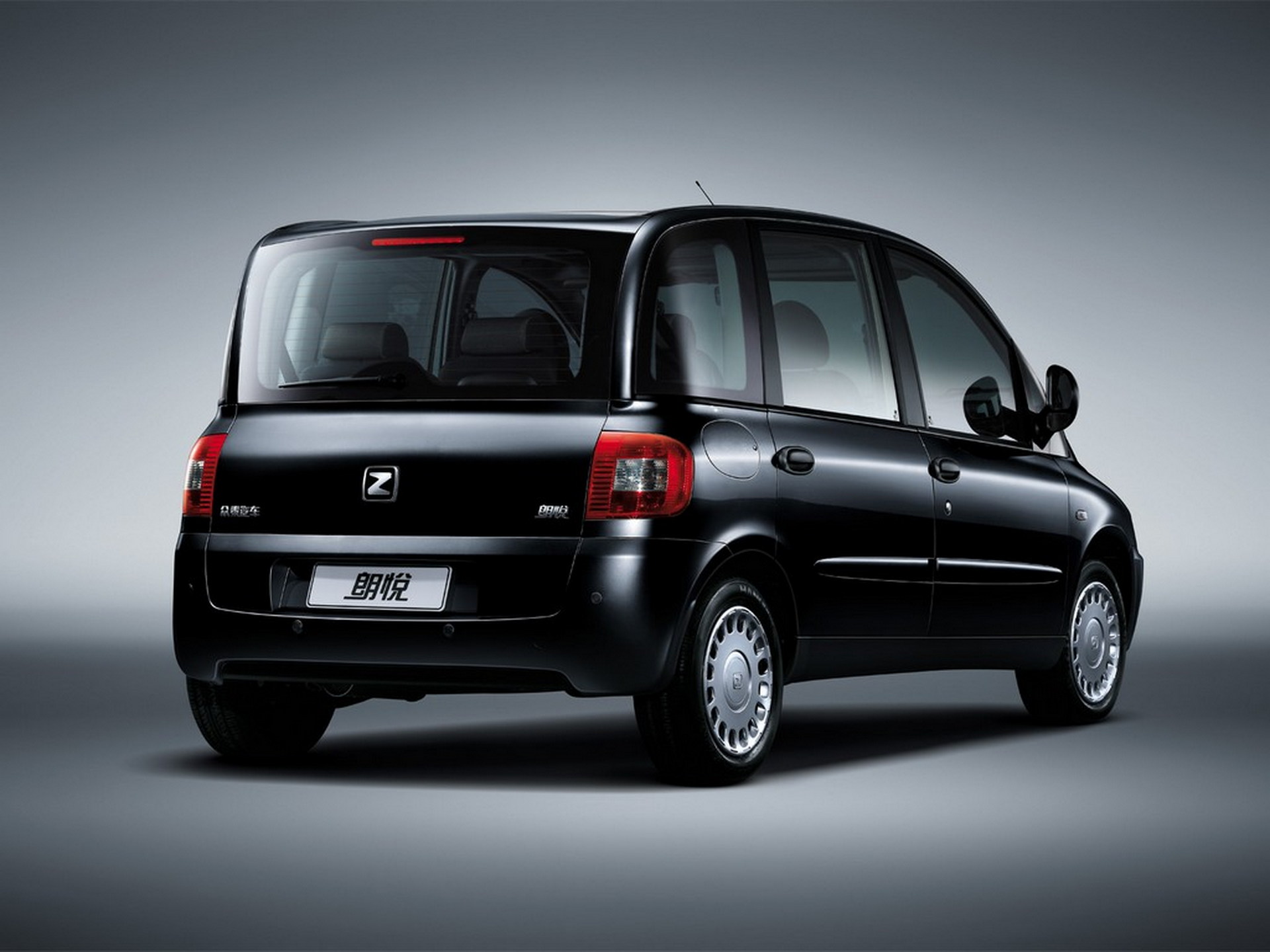The Fiat Multipla is considered by many as one of the ugliest cars in the world but it has also been loved for ingenious features like the six-seater cabin layout and the incredibly airy interior – especially for such a compact footprint. What is not widely known is that the quirky MPV was sold in China by Zotye, where it was available in both ICE-powered and fully electric variants.
The Multipla was first introduced in 1998 as Fiat’s entry to the compact MPV segment. The dual headlight design, the massive greenhouse, the nearly vertical sides, the unconventional two-row, six-seat layout, and the alien-like dashboard made it stand out from pretty much anything on four wheels. In 2004, the car was facelifted receiving a more conventional face with the Fiat Idea‘s headlights, a move that extended the Multipla’s life in Europe up to 2010.

The exterior design of the Zotye M300 Laguye was identical to the facelifted Fiat Multipla setting aside the “Z” badges and the lettering on the tailgate.
The less known Chinese-assembled Multipla was unveiled in late 2008 by Zotye Auto. Initially, it was called the Multiplan but it was later renamed the M300 Langyue. While Zotye is widely known for copying European designs like the Porsche Macan or the Range Rover, this one was not a ripoff but a legit rebadging after an agreement between the Chinese automaker and Fiat.
Starting from late 2010 and after the car was discontinued in Europe, Zotye bought the production line from Fiat and started manufacturing it in China. The use of locally-sourced parts significantly lowered its price which started from ¥69,800, the equivalent of around $10,500 in 2010 exchange rates.
Under the bonnet, there was Fiat’s original naturally aspirated 1.6-liter petrol engine producing 102 hp (76 kW / 103 PS) and 145 Nm (107 lb-ft) of torque. Power was transmitted to the front axle exclusively through a five-speed manual gearbox. What is more interesting though is the fully electric variant that was a novelty only Chinese buyers had access to since Fiat never offered a Multipla-based EV.
Read Also: Fiat To Stop Selling ICE-Powered Vehicles, Go EV-Only By 2030

The quirky interior of the Zotye Multiplan / M300 Languye had five or six seats and a dashboard that looked like it came out of a ’90s sci-fi film. Despite the compact length of 4,080 mm (160.6 inches), the cargo space was 430 liters (15 cubic feet).
The Zotye M300EV, or simply the E300 as it was later renamed, was powered by a front-mounted electric motor producing 80 hp (62 kW / 82 PS) and a respectable 250 Nm (184 lb-ft) of torque. The 80V/60Ah battery pack with a capacity of 35.2 kW provided the 1,705 kg (3,759 pounds) MPV with an electric range of 160-200 km (100-125 miles) under the optimistic NEDC measurements.
Those numbers may not sound impressive for today’s standards, but the fact that the battery was swappable still raises some eyebrows. Each of the four battery packs located under the rear seats weighed 65 kg (143.3 pounds), so the five-minute swapping process was completed by professionals with the help of machinery. As pictures circulating the internet suggest, this system came in handy for taxi drivers who benefited from the vehicle’s practicality, although the longer-range and more versatile in terms of refueling petrol variant still sounds more appealing for this type of use.
Read Also: Fiat Punto Successor Confirmed For 2023 Based On PSA-Group Platform
While the Zotye model was always based on the facelifted Fiat that had some of its weirdness purposely extracted, it was still an unconventional vehicle, especially for Chinese buyers who didn’t have the background knowledge of the Italian company’s philosophy. Weirdly, Zotye also offered it in a five-seater version alongside the original six-seater, which somehow misses the point of driving an MPV with a width of 1,870 mm (73.7 inches) – although the latter was also the reason behind the Multipla’s surprisingly adequate driving dynamics.
As you can probably imagine, the commercial performance of the M300 Languye in China wasn’t anything to write home about, with a total of 25,036 units sold between 2010 and 2013. Since Fiat didn’t plan a direct successor and MPVs went out of fashion, the discontinuation of the model in China would mark the end of the Multipla. As for Zotye, it continued producing cars and even made plans of entering the US market, but in 2021 the Chinese automaker went bankrupt, liquidating assets in order to pay off part of its massive debts.












